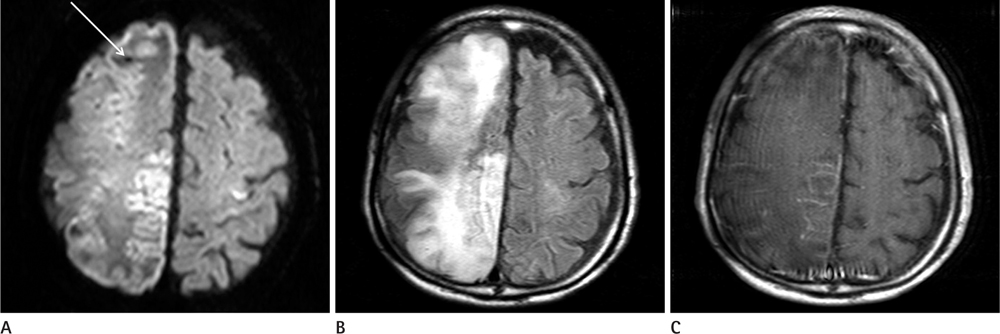J Korean Soc Radiol.
2011 Aug;65(2):109-112. 10.3348/jksr.2011.65.2.109.
Cerebral Air Embolism in a Patient with a Tuberculous-Destroyed Lung during Commercial Air Travel: A Case Report
- Affiliations
-
- 1Department of Radiology, Pusan Paik Hospital, Inje University School of Medicine, Busan, Korea. hwjeong2000@lycos.co.kr
- KMID: 1443471
- DOI: http://doi.org/10.3348/jksr.2011.65.2.109
Abstract
- A cerebral air embolism is a rare cause of stroke, but may occur in patients undergoing invasive cardiac and pulmonary procedures, as well as in divers suffering pulmonary barotrauma from rapid ascent. A cerebral air embolism due to other causes, especially a change of air pressure from air travel, is particularly rare. Here, we report a case of cerebral air embolism during commercial air travel in a patient with an tuberculous-destroyed lung.
MeSH Terms
Figure
Reference
-
1. Zaugg M, Kaplan V, Widmer U, Baumann PC, Russi EW. Fatal air embolism in an airplane passenger with a giant intrapulmonary bronchogenic cyst. Am J Respir Crit Care Med. 1998; 157:1686–1689.2. Edwardson M, Wurth D, Lacy JM, Fink J, Becker K. Cerebral air embolism resulting in fatal stroke in an airplane passenger with a pulmonary bronchogenic cyst. Neurocrit Care. 2009; 10:218–221.3. Almeida FA, Desouza BX, Meyer T, Gregory S, Greenspon L. Intrapulmonary bronchogenic cyst and cerebral gas embolism in an aircraft flight passenger. Chest. 2006; 130:575–577.4. Salameh J. A 62-year-old woman with cerebral artery air embolism during commercial air travel. Neurologist. 2010; 16:136–137.5. Closon M, Vivier E, Breynaert C, Duperret S, Branche P, Coulon A, et al. Air embolism during an aircraft flight in a passenger with a pulmonary cyst: a favorable outcome with hyperbaric therapy. Anesthesiology. 2004; 101:539–542.6. Neidhart P, Suter PM. Pulmonary bulla and sudden death in a young aeroplane passenger. Intensive Care Med. 1985; 11:45–47.7. Almeida N, Schuller D. Cerebral air embolism resulting from an airplane flight. J Repi Dis. 2007; 28:304–308.8. Oh JY, Park DW, Hahm CK, Park CK, Lee SR, Lee Y. A Cerebral air embolism that developed following defecation in a patient with extensive pulmonary tuberculosis: a case report. J Korean Soc Radiol. 2010; 63:307–310.9. Jeon SB, Kim JS, Lee DK, Kang DW, Kwon SU. Clinicoradio-logical characteristics of cerebral air embolism. Cerebrovasc Dis. 2007; 23:459–462.10. Kang DW, Chalela JA, Ezzeddine MA, Warach S. Association of ischemic lesion patterns on early diffusion-weighted imaging with TOAST stroke subtypes. Arch Neurol. 2003; 60:1730–1734.11. Muth CM, Shank ES. Gas embolism. N Engl J Med. 2000; 342:476–482.
- Full Text Links
- Actions
-
Cited
- CITED
-
- Close
- Share
- Similar articles
-
- Cerebral Air Embolism Following a Gastroscopy
- Cerebral Air Embolism and Cardiomyopathy Secondary to Large Bulla Rupture during a Pulmonary Function Test
- Stroke Caused by Cerebral Air Embolism after Central Venous Catheter Removal: A Case Report
- Spontaneous Absorption of Cerebral Air Embolus Developed Accidentally during an Intra-arterial Procedure
- A Cerebral Air Embolism That Developed Following Defecation in a Patient with Extensive Pulmonary Tuberculosis: A Case Report




